50 个专家设施管理技巧和最佳实践
无论您是著名且经验丰富的设施经理,还是只是一个有抱负的人,我们都知道这是一项需要继续教育和大量明智建议的工作,尤其是在涉及实施新技术的问题时。
幸运的是,我们从当今设施管理领域的杰出人士那里收集了 50 个最有用和最适用的技巧和最佳实践。花一些时间仔细阅读这些提示和技巧,以便您也可以做您需要做的事情,使您的设施尽可能现代化和安全。
我们按部分组织了最佳做法。点击下面的链接跳转到您最需要的提示。
- 降低运营成本的技巧
- 预防性维护提示
- 劳动力管理和沟通技巧
- 利用技术、工具、软件和指标的技巧
- 库存和资产管理提示
降低运营成本的技巧
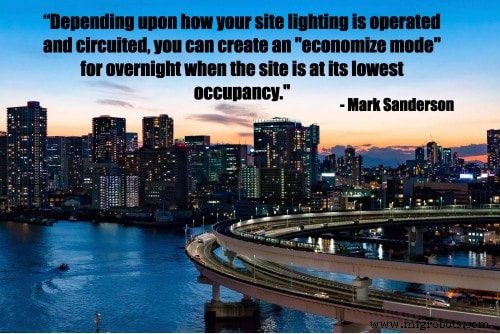
1. 减少夜间现场照明。 “根据您的场地照明的操作和电路方式,您可以在场地占用率最低的情况下为夜间创建“节能模式”。保持物业周围的周边照明以及所有入口和主驱动器的照明。
“您需要确保建筑物附近的照明和所有入口和出口门以及所有应急装置照明路径都将保持亮起。在这些区域之间寻找现场照明,并在您的照明自动化控制器中进行调整,以便能够关闭占用最少的区域或电路。”— Mark Sanderson,由 Brandon Lorenz 引用,设施经理降低能源成本的十个技巧, 设施网
2. 用 LED 替换旧照明。 “ Memorial Sloan-Kettering Cancer Center 选择 LED 来替换 24/7 开放的停车场的现有照明,从而将车库的电力消耗减半。与此同时,爱荷华州 Mediapolis 的 Mediapolis 社区学校也开始改造 LED 外部照明。
“我们的大多数旧灯都是 250 或 175 瓦。那些被 30 瓦 LED 取代。我们的 70 瓦灯被 20 瓦 LED 取代,我们的 70 瓦罐头灯被 10 瓦 LED 取代。我们将从我们的电力公司获得可观的回扣,以及每月节省的电费。”–Dennis Breuer,正如 Janelle Penny 所引用的,最大限度地节省成本的 12 大策略, 建筑杂志; 推特:@BuildingsMedia
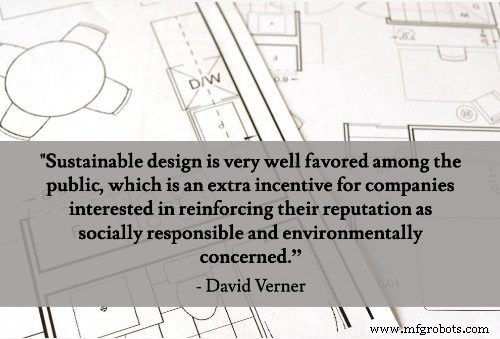
3.实施可持续的设施设计计划。 “可持续设计比以往任何时候都更容易实现和负担得起,特别是当你以年而不是几天和几周来考虑时。还值得注意的是,可持续设计在公众中非常受欢迎,这对有兴趣加强其社会责任和环境关注的声誉的公司来说是一种额外的激励。”-David Verner,降低工业设施成本可持续规划, 区域开发;推特:@areaDevelopment
4.了解直接和间接完成的所有设施工作的总成本。 “在未经训练的人看来,企业的设施维护部门似乎是一个成本黑洞。这些 FM 服务的成本加起来,除非出现差异,否则大部分业务分析就到此结束。但是,设施维护经理对构成每个工作订单的所有细微差别都很了解,他们了解该业务部门所涉及的复杂性和开销。
“影响总成本的变量有很多。除了与设施管理相关的其他直接和间接运营成本之外,每项服务(例如差旅费和材料)。”–Sean Hartnett,如何计算设施维护的真实成本 , 短信协助;推特:@SMSAssistLLC
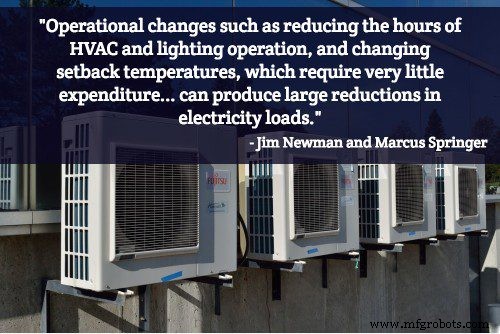
5.考虑影响设施能源使用的不太明显的改进。 “一些与能源相关的项目将或多或少地对用户隐藏,主要是为了减少能源需求,例如冷水机组和风扇单元的升级。此类项目最终可能会为建筑用户提供更好的温度控制,但这不是升级的主要目标。
“减少 HVAC 和照明运行时间以及改变回退温度等运营变化需要很少的支出(如果有的话)不会直接影响用户体验,但可以大大减少用电负荷。一般来说,与建筑运营团队合作减少能源使用可以显着降低负载。”–Jim Newman 和 Marcus Springer,成为建筑运营成本较低的英雄 , 调频链接;推特:@FMLinkGroupLLC
6.不要忘记查看建筑物的绝缘材料。 “所有商业建筑都是绝缘的;建筑规范规定必须达到一定程度的绝缘。不幸的是,由于大多数建筑物都是在严格的预算指导下建造的,因此它们通常只使用最少量的绝缘材料。而且由于建造建筑物的公司很少是管理或拥有它的公司,因此两者对预算的看法截然不同。
“更高的绝缘意味着更高的效率。只要有可能,您就可以提高绝缘水平,并让它立即改变建筑物居住者的整体舒适度。常见的措施包括安装节能窗户和照明系统,以及重做屋顶以尽量减少太阳能对建筑物本身的影响。”—降低商业供暖和制冷成本的技巧, 整体系统服务
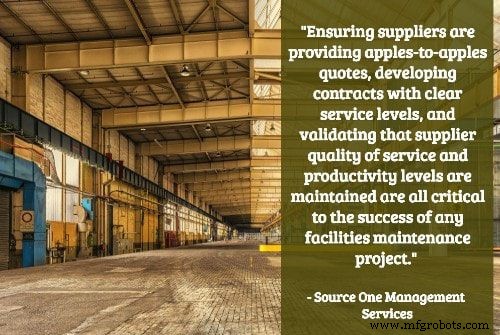
7.利用战略采购方法为设施工作找到合适的供应商。 “寻找合适的供应商来维护您的设施可能既困难又耗时。从清洁服务到场地维护和维护用品,确保供应商提供公平的报价、制定具有明确服务水平的合同,以及验证供应商的服务质量和生产力水平是否得到维持,这些都是任何设施维护成功的关键
“在设施维护类别中削减成本的尝试因无法危及员工安全和舒适的标准而受到影响。对于许多组织而言,这导致他们向设施维护供应商支付溢价。”—设施维护和设施管理类别的战略采购策略, 源一管理服务;推特:@getsavings
8.您的锅炉设备可能是提高效率潜力的主要来源。 “今天的锅炉使用冷凝技术可以达到高达 96% 的效率;然而,一个典型的建筑,包括新建筑,都使用大气式锅炉,无论出于何种目的和目的,它只比科学实验室的本生灯稍微先进一点。这项技术可靠且有效,但操作成本高。通常,我们看到安装这项技术是为了最大限度地降低建筑成本,而很少考虑建筑物的运营预算要吸收的长期能源影响。”–Ross Morley 和 Ed Porasz,六个能源审计技巧对于建筑经理 , REMI 网络;推特:@REMINetwork
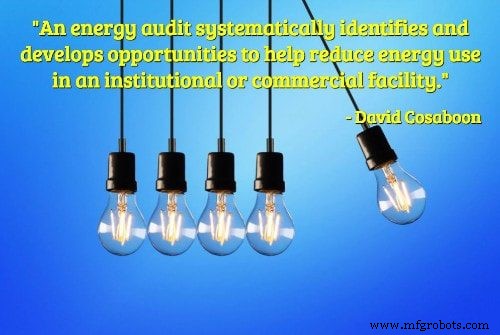
9.安排专业的能源审计。 “能源审计系统地识别和开发机会,以帮助减少机构或商业设施的能源使用,从而降低建筑运营成本。对维护和工程经理来说,重点关注审计是必不可少的。
“确定审计中要包括的领域和系统部分取决于组织愿意在能源效率方面投资的资源、设施的复杂性以及审计的数量。审计所需的详细信息和分析。了解这些因素将有助于管理人员选择适合建筑物和组织需求的审核级别。”–David Cosaboon,哪种能源审核适合您的设施 ?, 设施网
10.确定厨房能源使用的潜在主要效率。 “根据美国环境保护署 (EPA) 的数据,商业厨房是高能耗用户,每平方英尺消耗的能源大约是任何其他商业空间的 2.5 倍。英国碳信托表示,其中只有 40% 用于食品的制备和储存;大部分浪费的能源被分散到厨房。
“该技术的存在是为了显着减少能源消耗,从而减少碳足迹并显着节省成本。美国环保署声称,战略性投资的餐厅可以将能源成本降低 10%-30%; Foodservice Consultants Society International (FCSI) 是设计和管理咨询服务的专业组织,估计节能可高达 40%,相当于运营成本的 3%-6%。”–能源厨房的效率 , 绿色酒店经营者;推特:@green_hotelier
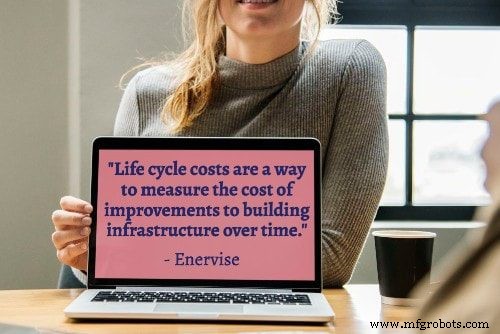
11.考虑建筑物的整个生命周期成本。 “生命周期成本是衡量随着时间推移改善基础设施建设成本的一种方式。这使建筑和设施管理专业人员能够确定改善建筑物或其中系统的特定元素的成本是否与同一时期的成本节省相比较。如果在其生命周期内的升级成本比它所节省的建筑运营成本更具优势,那么它通常被认为是一项不错的投资。”—8 个常见建筑运营成本问题的答案 , 精力充沛
预防性维护提示
12.衡量您的 PM 与所有维护活动。 “为您的 PM 流程制定绩效衡量标准,重点是衡量与所有其他工作相比已完成的 PM 工作量。 PM 总小时数应占部门所有维护工作的最高百分比。这个目标看似不可能,但随着时间的推移,它是可以实现的。” –Michael Cowley,成功进行预防性维护的 5 个技巧 ,设施网

13.制定计划并坚持下去。 “预防性维护就是计划,简单明了。您可以使用或照顾的每台设备或机器都应该有一个时间表,说明它需要什么类型的维护以及何时需要进行检查。
“设置时间表不仅可以确保您的设备保持最佳状态- 在其预计的使用寿命期间保持最佳状态,但它还可以帮助您规划人员需求并保持在预算范围内。一旦您准备好计划,就永远不要偏离它。”–Lisa Richards,7 项设施预防性维护技巧 ,MAPCON;推特:@MAPOCONtech
14.专注于特定的故障模型。 “失败模式被定义为“某事如何失败”。让我们使用平/膜屋顶来展示故障模式的示例。在平/膜屋顶上,一种失效模式可能是“屋顶膜穿透”,这种失效模式的原因可能很多。了解特定可维护项目(如薄膜屋顶)的故障模式及其原因可能是及早发现屋顶故障(不符合最终用户的意图)的关键,因此可以在影响操作之前进行维修.“——瑞奇·史密斯, 优化设施预防性维护计划的五个技巧, 工程系统杂志;推特:@esmagazine
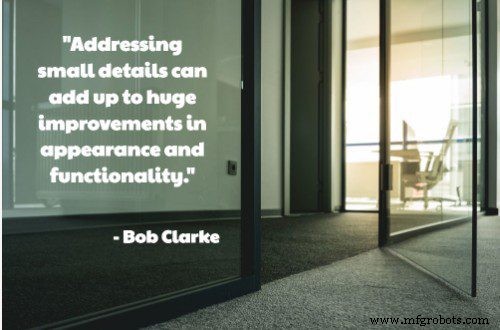
15.进行主动演练以发现“小”问题。 “在小问题变成大问题之前抓住它们。处理小细节可以大大改善外观和功能。请您的设施服务提供商、清洁公司和/或杂工与您一起走过,重点关注您通常会忽略的细节。检查维修/更换的一些东西是:门(门扫、门挡、粘锁等)、护角、瓷砖和灌浆、电灯开关和面板、天花板瓷砖、台面和搁板、橱柜和铰链,以及灭火器。
“别忘了用新的填缝剂和墙壁上的新油漆让一切看起来更加清新 - 温暖的天气可以让春天成为为您的设施赋予新的审美生活的好时机。” –Bob Clarke,设施的 6 个春季维护技巧 ,建筑杂志;推特:@BuildingsMedia
16.了解预测性维护、预防性维护和反应性维护之间的区别。 “设施管理人员通常使用三种建筑维护方法:
- 反应式 - 这是“当它崩溃时修复它”的方法。
- 预防性 - 这是“检查并在损坏之前进行维修”的方法。
- 预测性 - 这是“使用技术预测问题何时发生并提供相应维护”的方法。
设施管理人员使用的最常见的维护类型是“反应性”方法。根据 Akita Box 关于预防性维护计划的帖子,总维护支出的 85% 用于反应性维护。原因很简单:它是最便宜的——或者至少看起来是最便宜的。现实情况是,只有在一切顺利的情况下,它才是最便宜的。但是,众所周知,事情并不总是一帆风顺。”–Neal Peters,降低设施维护成本的最佳方法 , DPM 关怀;推特:@dpmcare
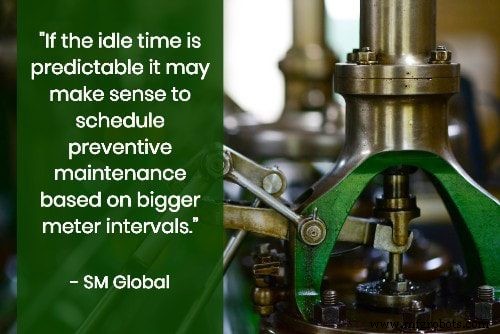
17.了解工作时间和空闲时间的区别。 “您可以根据设备上的仪表读数安排预防性维护。但是,设备仪表通常不区分工作时间和空闲时间。因此,在 20% 的时间内处于空闲状态的机器可能会比必要的更频繁地安排预防性维护。如果空闲时间是可预测的,那么根据更大的仪表间隔安排预防性维护可能是有意义的。”— 计划设备预防性维护的 7 个技巧, SM 全球
18.确保您的预防性维护任务对您的设备有益。 “例如,润滑梁锯的齿条和小齿轮会导致油脂和锯屑随着时间的推移在齿轮内凝固,最终阻止它们移动。如果您不确定哪些任务对每台设备有益,请咨询您的设备代表。”— 预防性维护的 10 条提示, Stiles 机械; @StilesMachinery
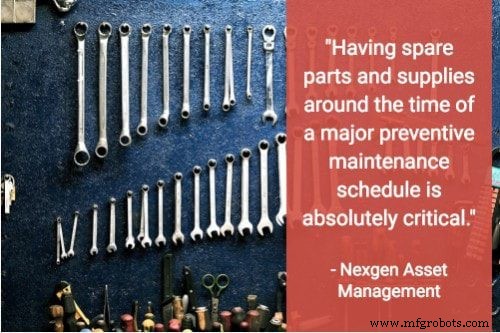
19.预测未来的备件库存需求。 “ 在重大预防性维护计划期间拥有备件和用品绝对至关重要。资产管理软件允许您在工作订单到期时检查备件的可用性。该报告可以帮助您识别对于未来所需的工单来说不足的部件。如果您知道自己缺少哪些零件,则可以提前从供应商处订购,而不必等到达到重新订购的限制。”—更好的设备预防性维护的 7 个技巧 , Nexgen 资产管理;推特:@nexgenam1
劳动力管理和沟通技巧
20。 Use different methods of communication. “Appropriate repetition and reinforcement are necessary. The average person is bombarded with more than 300 messages while at work, and multiples of that outside of work, Finney says. Getting a message to land with an audience might take as many as 12 repetitions, in some cases, he says.”–John Finney as quoted in Facilities Maintenance Decisions Magazine, For Good Facility Management Communication, Keep Three Points in Mind; Twitter:@maintenance_mag
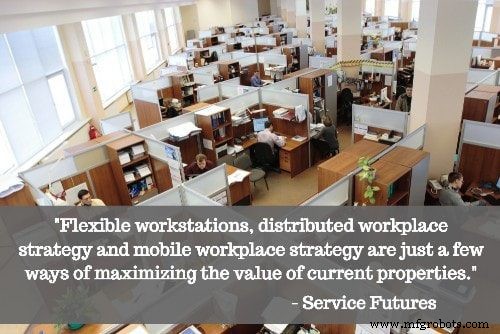
21. Optimize the use of available workspace. “Space costs money. Knowing that we are moving towards a working environment consisting of virtual or mobile workers, investing time in developing new workplace designs that can suit these new ways of working while increasing space utilization rates can result in impressive cost savings. Flexible workstations, distributed workplace strategy and mobile workplace strategy are just a few ways of maximizing the value of current properties. Reinvestment can with advantage be allocated to less space, but better space propositions.”—7 Ways to Grow Competitiveness in the Facility Management Industry by 2020 , Service Futures; Twitter:@issworld
22. Be the master of your company’s physical assets. While other managers may work to manage clients or staff, your job is to manage facilities and all that occurs in them. Your corporation’s physical assets are just as important as your human resources, and you are the expert in this field. Whether it’s collating data or contributing to the organization’s bottom line, your input is a valuable part of corporate decision-making. If you’d like to change buying practices or convert to more energy-efficient heating, make a statement and back it up with your data and your years of facilities management experience.–James McDonald, 5 Things Facilities Managers Must Do to Gain Respect &Clout, iOffice; Twitter:@iofficecorp

23. Set clear definitions for facilities work practices. “Workplace inclusion has to be clearly defined before any initiatives can be pushed forward. One useful definition of an inclusive office is a workplace in which all staff are treated with respect and have equal access to resources and opportunities. Facility managers should build on this high-level description to create an idea of what concepts like equal access, diversity and fairness look like in their own facilities. Including these definitions in your company’s core values will help you to set clear goals and build concrete policies.”–Nick Mason, A Facility Manager’s Guide to Inclusive Workplaces Office Space Software; Twitter: @OfficeSpaceSw
24. Use a design that plans for social time and spaces. “Let’s get together:when you’re designing your facilities, design social spaces for your employees. These might be lunch or break rooms, games rooms, gyms, or even community gardens. When you provide places where employees can relax and socialize in a less-structured atmosphere, you may find that new connections emerge between departments and between different levels of management.”–Tiffany Bloodworth Rivers, 7 Tips to Help Facilities Managers Make The Workplace A Stress Free Zone , iOffice; Twitter:@iOfficeCorp
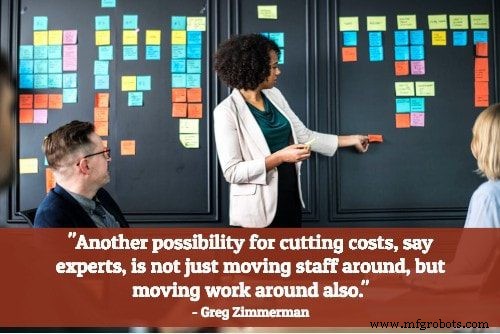
25. Consider moving some basic activities from outsourcing to in-tasking. “Another possibility for cutting costs, say experts, is not just moving staff around, but moving work around also. This means carefully examining all outsourcing contracts to see if they can be scaled back and the work completed by in-house staff. Bechtol says she’s actually been doing this for years — completing tasks like painting and cleaning with in-house staff and overtime — but it’s even more valuable now in tough economic times.”–Nancy Bechtol as quoted by Greg Zimmerman, Facilities Maintenance Decisions Magazine; Twitter:@maintenancemag
26. Create a formal in-house process for developing employee skills. ”We are focused on ‘building a bench’. This concept is broadly used to describe our attempt to formally identify in-house talent in many of our labor shops. We identify talent through a competitive selection process based on potential vs. skills and promote our selected personnel to the worker and helper level while training them to achieve appropriate full mechanic level with associated certifications/licenses.”–Robin Morey as quoted by Higher Ed Facilities Forum, Dealing with an Aging Facilities Management Workforce, Twitter:@HEFForum
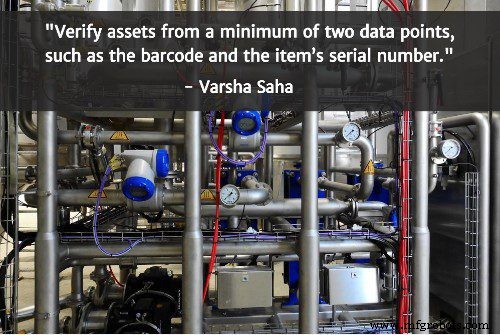
27. If outsourcing your FM, work with an agile partner who adapts to your needs. “This is one of the single biggest advantages that smaller providers have. They can allow their frontline staff to be creative and actually make changes to processes and implement them. This directly leads to the client receiving a more fit-for-purpose solution and ultimately receiving greater value which grows a greater relationship.”–Andrew Hulbert, as quoted by Kevin Stanley, The Art of Delegation, FMWorld; Twitter:@fm_world
28. Sell your department wisely during budget presentations. “We always present our budgets by leading with how the proposal responds to a real problem. In other words, there has to be a compelling reason based on our mission for why we would submit budgets for anything.” By presenting specific information on how and why you’ve chosen your budget numbers, you can help the C-suite see that your budget is well within reason.”–Tim Woodley, as quoted by David Spence, 5 Budgeting Tips for Facilities Managers , Office Space; Twitter:@officespacesw
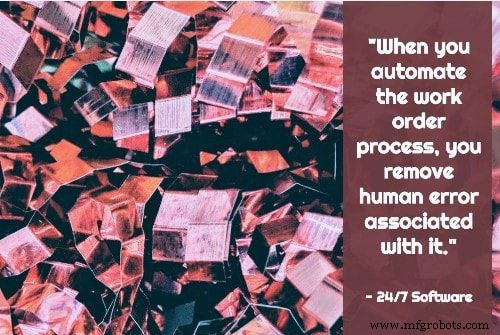
29. Automate the work order process. “When you automate the work order process, you remove human error associated with it. Essentially, you’re taking the people out of the process and ensuring nothing gets missed or overlooked. Doing this allows you to create, track, edit and automatically communicate work orders for your facility. This is number one on the list, because it’s one of our favorite habits – and arguably the most important! Don’t let problems with employees slow down your operation or increase workplace stress for others.”—The 7 Habits of Highly Effective Facility Managers, 24/7 Software; Twitter: @247_software
Tips for Leveraging Technology Tools, Software, and Metric
30。 Utilize software to help facilities managers organize and access information.
“There are many different software options out there than can aid FMs in organizing and streamlining their everyday tasks. This ranges from software designed to help manage all maintenance activities to logging and tracking facility visitors for security purposes.
There are also several comprehensive facility management software options available. One popular option in this area is NetFacilities, a web-based software that aims to centralize the many things FMs need to manage—from vendors and work orders to asset management and preventative maintenance—in one convenient place.”–Neal Peters, Top Technology Tools for Facility Managers , DPM Care; Twitter:@dpmcare
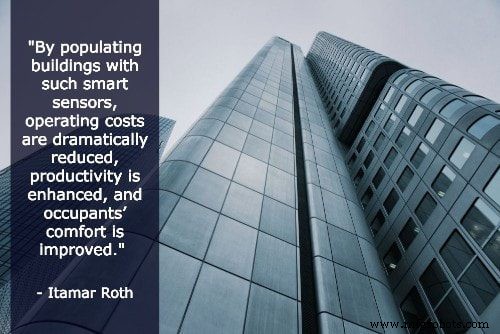
31. Utilize modern smart sensor solutions to reduce costs and enhance capabilities. “By populating buildings with such smart sensors, operating costs are dramatically reduced, productivity is enhanced, and occupants’ comfort is improved. Specifically, detailed information about occupants’ presence, location, count, and activity can now be used to significantly optimize facility management. Hot desking, meeting rooms booking, optimized space planning, and energy savings are some of the immediate use cases.”–Itamar Roth, Facility Management Is Facilitated By Smart Sensors, Facilities Executive ; Twitter:@facilityexec
32. Manage HVAC remotely using software tools. “One of the most exciting features of Facilities Management software is the ability to manage heating and cooling remotely, or set a programmable thermostat to move set temperatures up or down throughout the day. Facilities planners love the ability to analyze and explore energy use from heating and cooling systems. Leaders can use the ‘business intelligence’ delivered by the software to set thermostats and controls for maximum savings in energy costs. Some of these tools can even be ported to smartphones to help remote managers do their jobs from wherever they happen to be.”—10 Ways Software Can Help with Facilities Management , SelectHub; Twitter:@selecthub
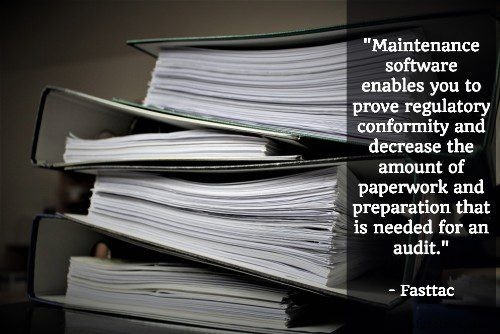
33. Use your software to double-check your compliance. “Maintenance and facilities administration systems must frequently abide by national and global regulatory requirements. All maintenance administrators face occasional random or audits inspections by regulatory authorities. Maintenance software enables you to prove regulatory conformity and decrease the amount of paperwork and preparation that is needed for an audit. Maintenance administrators can simply create reports showing the maintenance work done on essential machinery. This makes conformity traceable and minimizes the risk of non-compliance penalties.”—7 Steps to Successful Facilities Management , Fasttac; Twitter:@fasttac
34. Facilities management KPIs should highlight errors and opportunities. “KPIs allude to opportunities and errors in your company. Paired with the Internet of Things (IoT) and energy management systems, KPIs can be used to highlight missed maintenance tasks, greater traffic area of your business or problems with machinery. Take, for example, using a percentage KPI of planned maintenance against reactive maintenance. In other words, is preventative maintenance saving more money than repairing equipment when it fails?”—7 Tips for Creating Facilities Management KPIs , Entouch Controls
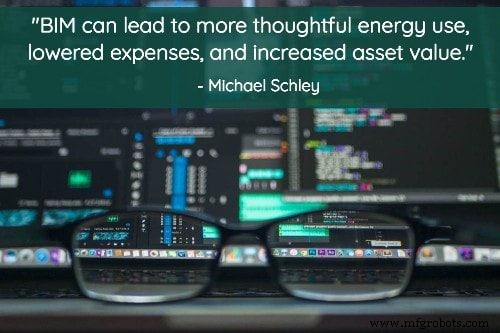
35. Use building information monitoring to monitor system performance. “Closely monitoring energy and water use to reduce building-operating costs is another benefit. By allowing owners to monitor and analyze the performance of multiple systems—air-conditioning levels, lights on automatic dimmers, water usage—BIM can lead to more thoughtful energy use, lowered expenses, and increased asset value.”–Michael Schley as told by Jeff Link, BIM for Facilities Management:4 Tips to Improve Lifecycle Performance and Reduce Costs , Autodesk; Twitter:@autodesk
36. Consider advanced automated building entry solutions. “A feature that’s gaining a lot of ground is using facial recognition technology to let people in and out of the building. It’s more secure than key fobs or cards, and unlike cards and fobs, you can’t forget your face at home. It’s like batting a triple, or killing three birds with one stone. Automated building entry removes the need to grant special access to the building, replace missing key fobs or cards, or issue new ones to new employees.”–Michael Moulton, 5 Tech Features Facilities Managers Can’t Live Without , Teem
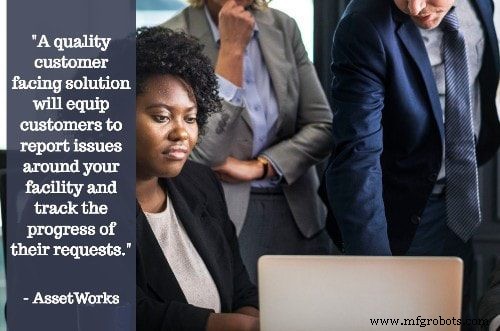
37. Provide a customer facing software solution for reporting improvements and tracking requests. “Offering simple solutions for your customers will keep them happy – and your buildings running smoothly. A quality customer facing solution will equip customers to report issues around your facility and track the progress of their requests. Not only does a customer portal help your clients feel heard as you keep them up to date on progress. A digital customer request system simplifies the work order and assignment process for your facilities management team as well.”—Top Facilities Management Tips for Long-Term Success , AssetWorks; Twitter:@AssetWorks
38. Thermal imaging technology can help identify and fix unseen problems. “ Performing facility maintenance and engineering tasks is like sailing among icebergs. What technicians can’t see will sink them — or their facilities. Thermal imaging technology gives technicians the ability to see the unseen, making it easier to spot failing motors and electrical components, HVAC condensate leaks, bad ductwork, and leaky roofs. Technicians then can fix problems before they become large headaches, as well as reduce heating and cooling costs as part of sustainability initiatives.”–John Anderson, Putting Thermal Imaging to Work in Facility Maintenance, FacilitiesNet
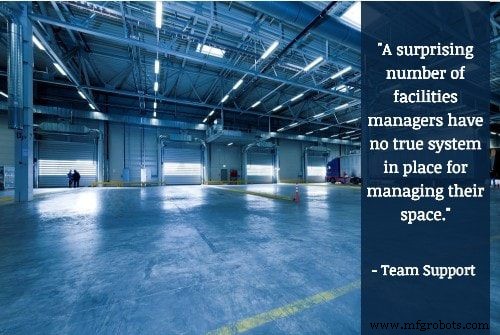
39. Integrate a facilities management software system. “A surprising number of facilities managers have no true system in place for managing their space. More than a quarter of everyone interviewed – 28 percent – say they currently do not use any type of facilities management system. A further 23 percent of participants use pen and paper methods for their facilities management. While this is slightly better than no system at all, it still makes it very difficult to collect data, keep accurate records, or gain much insight from the information they have.”—The Importance of Facilities Management Systems , Team Support; Twitter:@teamsupport
40. Leverage your software system to make EH&S benchmarks transparent. “Facilities Management software is specially designed to help make health and safety benchmarks and outcomes transparent. It may help significantly with compliance with various industry standards, such as HIPAA in the healthcare industry and Sarbanes-Oxley in the financial field. It can help to document best practices for avoiding accidents, or in the worst case scenario, document the facts around a workplace accident. Various types of health and safety features can save a lot of time and effort for busy management teams, and help the company to benefit from a better reputation.”—10 Ways Software Can Help with Facilities Management, Select Hub; Twitter: @selecthub
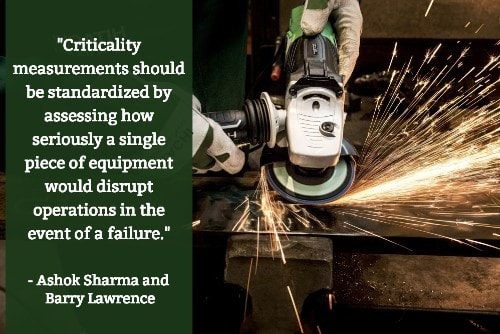
41. Have an equipment criticality matrix to prioritize work. “This method identifies how critical a piece of equipment or maintenance task is to your business and will ultimately show you where it should land in your prioritization process. Criticality measurements should be standardized by assessing how seriously a single piece of equipment would disrupt operations in the event of a failure. “–Ashok Sharma and Barry Lawrence, 5 Essential Tools for Facilities Managers , eLearning Industry; Twitter:@elearnindustry
42. Smartsheet software can add unique collaboration features to everyday spreadsheet use. “Smartsheet is a spreadsheet that you share with your co-workers, but its features go far beyond Excel. This tool combines the traditional spreadsheet with project management tools, templates, and forms and allows you and your colleagues to access spreadsheets on mobile devices and work on them collaboratively.”–Tiffany Bloodworth Rivers, 9 Easy-To-Use Tools That Will Help Any Facilities Team Collaborate, iOffice; Twitter:@iOfficeCorp
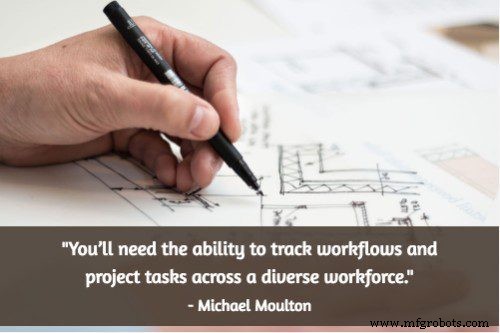
43. Adaptive workflow tracking allows you to track activity throughout a diverse workforce. “The business world is increasingly embracing a larger remote workforce. Offices are used as areas to collaborate, develop, and design new ideas. The day-to-day work can be, and often is, done from home. That means you’ll need the ability to track workflows and project tasks across a diverse workforce. Emailing details back and forth regarding a project gets hectic, and it’s easy to lose an important piece of a proposal to your inbox.
Again, we’ll turn to automation – adaptive workflow tracking software that shows real-time project progress via a cloud-based platform will be the norm in a few short years. Products such as Trello or Asana are great examples of adaptive workflow tracking integrating with high success into businesses of all sizes.”–Michael Moulton, 5 Tech Features Facilities Managers Can’t Live Without, Teem
Inventory and Asset Management Tips
44。 Keep your facilities management documents consistent and accurate. “ If you’re a responsible facilities manager, you have to know what you’re responsible for. You cannot do your job properly without the correct information. If you don’t have proper records on the state of your facilities, you can’t do your job as a facilities manager. Without accurate documentation, you can’t even get a good bid from a vendor for work on your building. The first thing they will ask is, Where are the As-Built drawings? Without the As-Builts, the bid could be much higher.”—7 Tips on Reducing Facilities Maintenance Costs and Risks, SKYSITE; Twitter:@skysiteproject

45. Implement a consistent asset tagging process. “ Verify assets from a minimum of two data points, such as the barcode and the item’s serial number. When disposing of assets, this step is crucial to ensure an “accurate and verifiable chain of custody,” which can help to mitigate data breaches (particularly for the disposal of IT assets) and also help to maintain compliance with regulations.
“Implementing a consistent asset tagging process flow ensures that all assets received by your company are consistently classified and tracked, making it easy to locate assets throughout the company, implement regular maintenance schedules, and maintain accurate record-keeping for auditing and accounting purposes. Developing clear policies and procedures and training your team members on approved asset tagging procedures streamlines processes and can ultimately have a positive impact on your bottom line, allowing you to improve resource utilization, reduce unnecessary duplication of assets, and get more usable life out of your investments.”–Varsha Saha, 6 Steps in Asset Tagging Process Flow , 密码;推特:@camcode
46. Keep assets updated and clearly define essential vs. non-essential assets. “After collecting data and developing a maintenance schedule for your assets, you need to plan for the long-term maintenance of your asset inventory. Specifically, put a plan in place that revolves around updating and decommissioning assets. In some cases, you may find that a particular asset, even if updated, isn’t serving your organization in the best way, making it a non-essential asset that you don’t need to continue holding. Similarly, by having a working inventory list and accompanying data, dealing with critical needs and unexpected asset failures will be easier because you know exactly what needs to be done and when it needs to take place.”–Luke Perkerwicz, The Beginners’ Guide to Facility Asset Management , AkitaBox; Twitter:@Akitabox
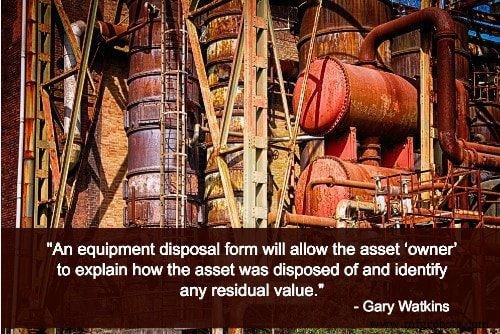
47. Track and dispose of decommissioned assets. “ However good asset management and maintenance planning is, there comes a time when an asset reaches the end of its useful life and should be disposed of. On a practical level, all assets disposed of must be recorded on the asset register/software, to ensure they are not included as part of the organization’s portfolio. An equipment disposal form will allow the asset ‘owner’ to explain how the asset was disposed of and identify any residual value.”–Gary Watkins, Effective Asset Management for Facilities Managers, Service Works; Twitter:@service_works
48. Do an asset assessment and document those conditions. “If you’re trying to get a handle of your documents, the first thing you should do is an asset assessment. Detail the condition of all the main equipment and systems, and document those conditions. No technology can help you unless you document what you have. After the assessment, you should create and begin a proactive maintenance program, as well as an equipment replacement plan—that should be a 3-year to 5-year plan. Even if the piece of equipment is 30 years old, you need to know when you need to replace it.”—7 Tips on Reducing Facilities Maintenance Costs and Risk, SKYSITE; Twitter:@skysiteproject
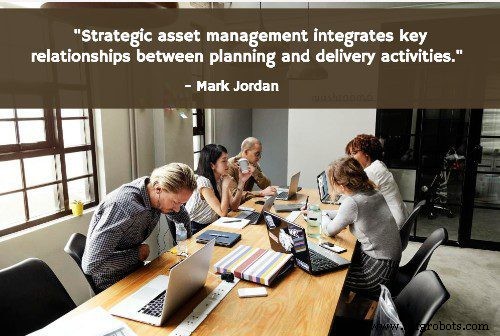
49. Consider a strategic asset management approach. “Strategic asset management integrates key relationships between planning and delivery activities. The framework that underpins the decision-making process of those activities is key, as it allows informed decisions and correlation between strategic goals and delivery outcomes. It also acts as the integration mechanism between a singular project and an organization’s wider portfolio of projects.”–Mark Jordan, An Asset Management Approach to Facilities Management , FM Magazine; Twitter:@FMmagazine_au
50. Maximize vertical space in your warehouse. “ A warehouse has a set amount of square footage to utilize, making innovative, optimized layouts appealing for today’s warehouse managers who are faced with storing increased product volume in a static amount of space. In 2016, consider making better use of the vertical space in your facility, but don’t neglect layout optimization best practices. Maximize your use of vertical cubic footage by placing seasonal products or those that move less frequently in harder-to-reach vertical storage areas.”–Varsha Saha, 6 Tips for Better Warehouse Inventory Management in 2017 , 密码;推特:@Camcode
Products and Tracking Solutions from Camcode:
- Magnetic Warehouse Labels
- Vinyl Labels
- Property Of Stickers
- Custom Barcode Labels
- Property Tags
- 安全标签
- Pipe Markers
- UID 标签
- Permanent Labels for Equipment
- Pallet Labels
工业技术


